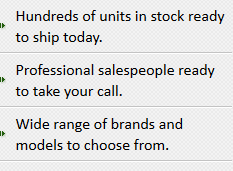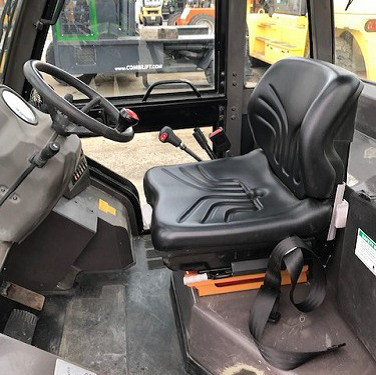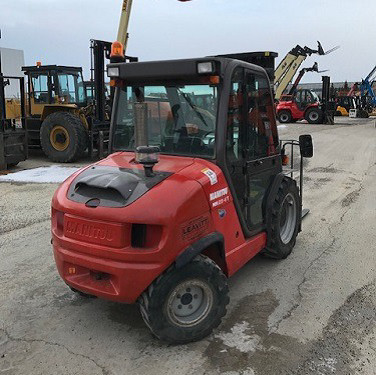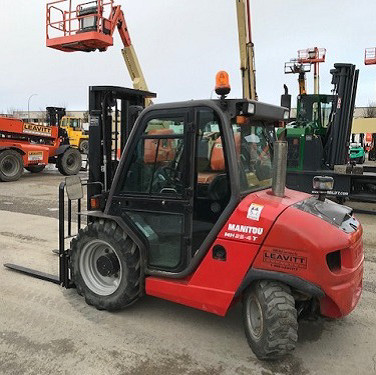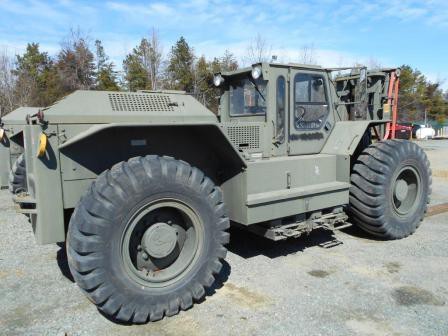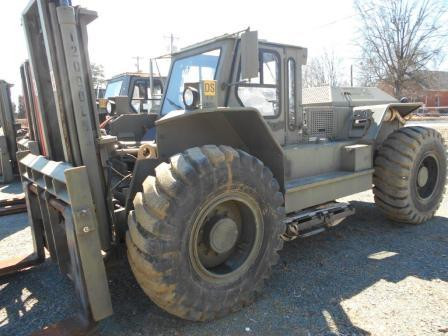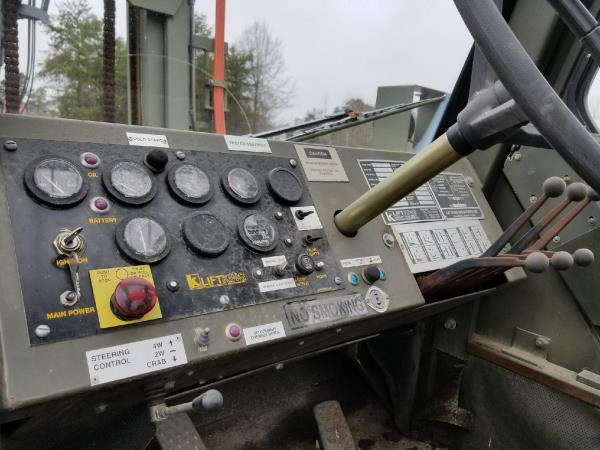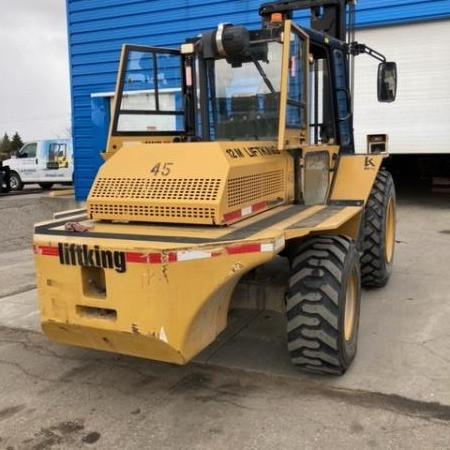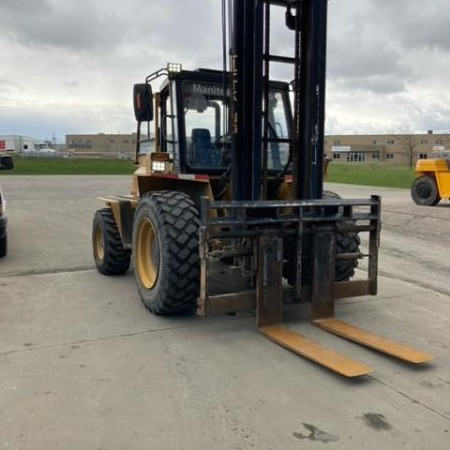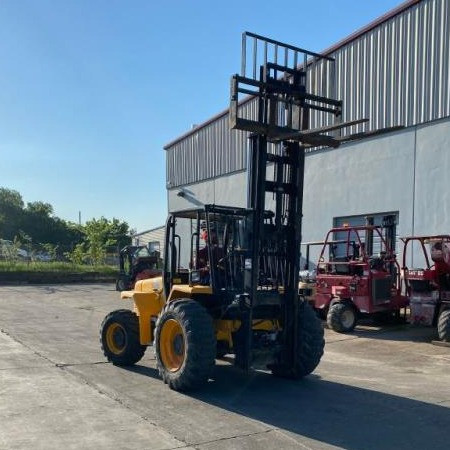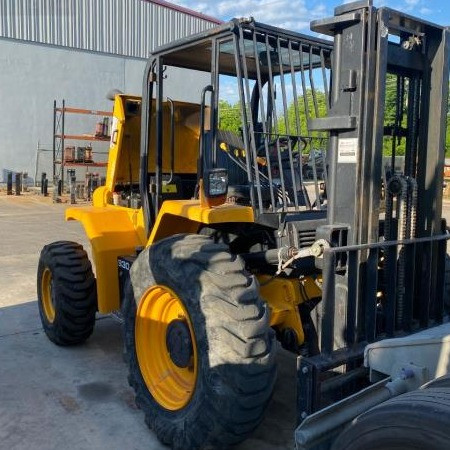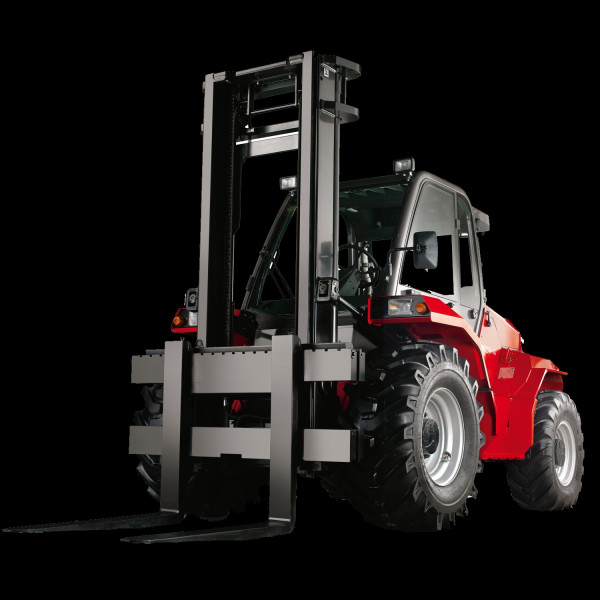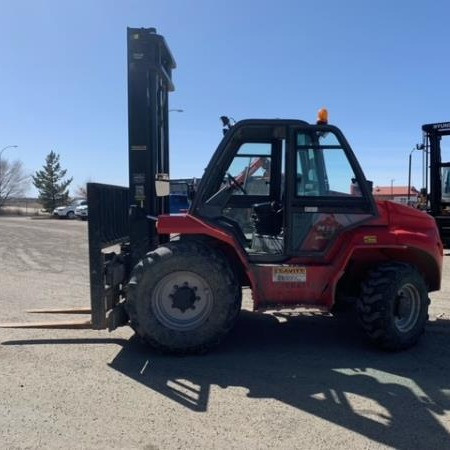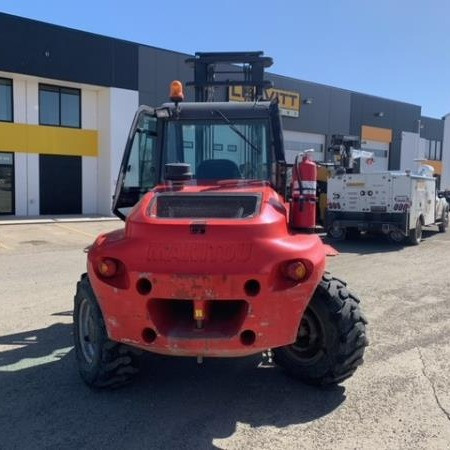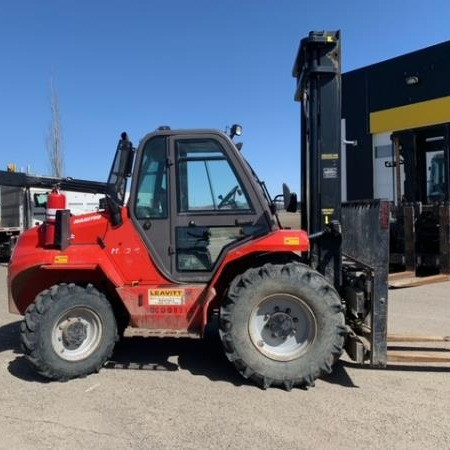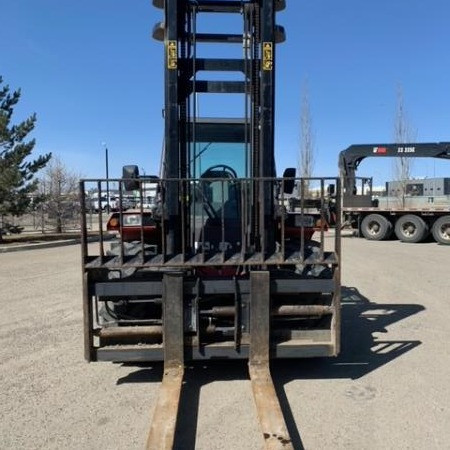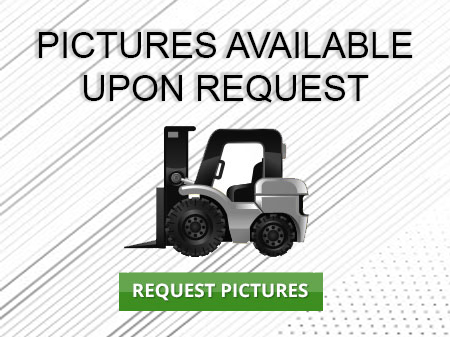Rough Terrain Forklift Virginia
Used Rough Terrain Forklift Virginia - Forklifts rely on two forks to unload, load and transport items. The two main categories of forklifts are industrial forklift and rough terrain forklift.
Ideal for working on surfaces that are level and smooth, industrial forklifts are mostly utilized for warehouse applications and loading dock situations. By contrast, the second category of forklifts, rough terrain forklifts, are commonly used to run on uneven and rocky surfaces. Commonly found at exterior construction sites, rough terrain forklifts have the tires, size and weight capacity to handle heavy loads. The main difference between rough terrain and industrial forklifts is the cushion tires that are on industrial forklift models. Rough terrain models rely on pneumatic tires, a kind of tractor tire known for better floatation and traction abilities. Internal combustion engines can power industrial forklifts; however, more often they rely on an electrical source such as a fuel cell or better. Rough terrain models typically rely on an internal combustion engine.
Types of Class 7 Rough Terrain Forklift Trucks
The three types of Class 7 Rough Terrain Forklift Trucks include the rotating telehandler forklifts, telehandler forklifts and straight mast forklifts.
Every rough terrain forklift truck is designed to operate on disturbed ground and difficult locations commonly found in military and construction atmospheres. The rough terrain models travel and perform well in difficult locations. In the case of rough terrain forklift operations, extra consideration must be given while raising loads in these rough, variable conditions to prevent tip-over. The machine needs to remain in a stable position prior to lowering, lifting or moving any items. Rough terrain forklift operators must practice correct lifting techniques to remain stable on the ground.
Straight Mast Forklifts
Straight mast forklifts are designed to transport building materials around a range of rough terrain sites such as demolition and construction sites. Pneumatic cushion tires allow this forklift better maneuverability and accessibility around difficult terrain. Pneumatic tires allow the machine to successfully traverse difficult terrain. The majority of straight mast forklifts come in both two wheel and four wheel drive capabilities. Even though these machines are better utilized in exterior locations, many straight mast forklifts operate with propane or diesel, enabling them to be used indoors for short timeframes. Both standard and straight mast forklifts offer similar lifting capacities weighing from 5000 to 36,000 pounds, depending on the model.
Telehandler or Telescopic Handler Forklifts
Telescopic handler forklifts or telehandlers feature a telescoping boom; hence their name. Telescoping booms are handy for allowing the machine to load and place items at different lift heights and distances in front of the forklift. Better reachability delivers greater flexibility to the forklift operator while placing loads.
A standard telehandler forklift is long and low, with two wheels at the very front of the forklift and another pair of wheels toward the rear of the machine. Mounted at the back of the forklift, the telescopic boom is on a pivot that is located many feet above the forklift frame. The fuel tank and hydraulic fluid tank are found opposite to the forklifts’ cab that is typically mounted on the left side. Within the frame itself, the transmission and engine are located along the center-line of the forklift. Creating a balanced machine is essential for a well-designed forklift. Having this particular configuration generates a stable environment for lifting, lowering and transporting loads.
Telehandler forklifts provide much greater lift heights when compared to a standard forklift. Otherwise known as high-reach telehandlers or compact telehandlers, these models perform. Compact telehandlers can extend their full load capacity from eight-teen feet and the high-reach models to fifty-six feet. Load capacities are between 5K to 12K pounds.
All-wheel steering is popular for all-terrain forklifts and provides increased maneuverability. Thanks to steering features including power-shift transmission, the operator can maneuver the machine in excellent proximity to the work location.
More recently, Telehandler forklift models have included additional features that incorporate the latest in ergonomics. Operator comfort is enhanced via larger cabs and tilted steering. High in demand at job sites, these ergonomic options reduce operator fatigue and repetitive stress injuries.
The majority of telehandler forklifts are operated by a single joystick. The joystick controls all the forklift’s boom functions as well as the hydraulic system which allows for straightforward and efficient operation.
Non-marking tires are a feature that telehandler forklifts can benefit from by allowing these units to be utilized for maintenance on billboards and signs and on stadiums and buildings.
Rotating Telehandler or Roto Telescopic Handler Forklifts
Rotating telehandler or roto telescopic handler forklifts have many features in common with the standard telehandler forklift. These include the rotating telehandler’s ability to lift heavy weight to great heights. The turntable or rotating ability add extra panache. Rotating the forklift a complete three-hundred-and-sixty degrees creates a larger working location without the need of repositioning the forklift.
With rotating telehandlers, one joystick handles the lift capacity and a second joystick is responsible for the rotation factor. Power-assist steering minimized slip differential on the rear axle for additional traction and four-wheel drive are some of the extra features offered on rotating telehandlers and standard telehandler models.
Any machine with rotation capabilities will have additional safety measures to consider. Stabilizers are a rough terrain forklift feature that rotating telehandler models rely on to increase safety while handling rotating loads that are swinging back and forth from each side of the machine. Some rotating telehandlers do not have stabilizers. These units are created to move and work in various aspects of the job site and are easier to reposition without stabilizers.
Rotator telehandler units are typically smaller than standard telehandlers with their fixed-cab design. Therefore, rotator telehandler units can access smaller loads when compared to standard telehandler units. Rotating telehandlers offer load capacities ranging from 4000 to 10,000 lbs. and lift heights between fifteen to eighty feet.
Both telehandlers and rotator telehandlers can be used as a crane when fitted with a winch attachment. These forklift attachments can save time and money by preventing a separate crane rental to be required.
Advancements for Rough Terrain Forklifts
Numerous attachments can be found for rough terrain forklifts including articulating booms, rotating fork carriages, booms, winches and similar items. More rough terrain forklift attachments will be unleashed onto the market in future years thanks to their ability to make the forklift more multi-purpose than ever before.
The majority of advancements will be delivered as safety features built to enhance the rough terrain models. Some new safety features have already been developed such as automatic load restriction devices. By automatically weighing a load, these systems calculate the loads’ safe reach distance while taking the boom angle and its’ extension into account. An alarm sounds once the safe distance is reached, warning the operator to make load weight, reach distance or boom angle adjustments.
Rough Terrain Forklift PDF
Stock Number: DP-MAN008 GL
Make: MANITOU
Model: MH25-4T
Year: 2016
| Stock Number |
DP-MAN008 GL |
| Make |
MANITOU |
| Model |
MH25-4T |
| Year |
2016 |
| Category |
Rough Terrain Forklift |
Stock Number: 267846 GL
Make: Liftking
Model: LK12000
Year: 2003
| Stock Number |
267846 GL |
| Make |
Liftking |
| Model |
LK12000 |
| Year |
2003 |
| Category |
Rough Terrain Forklift |
Stock Number: 209058 GL
Make: LIFTKING
Model: LK12M42
Year: 2015
| Stock Number |
209058 GL |
| Make |
LIFTKING |
| Model |
LK12M42 |
| Year |
2015 |
| Category |
Rough Terrain Forklift |
Stock Number: LS15257 GL
Make: JCB
Model: 930
Year: 2013
| Stock Number |
LS15257 GL |
| Make |
JCB |
| Model |
930 |
| Year |
2013 |
| Category |
Rough Terrain Forklift |
Stock Number: EQC008213 GL
Make: MANITOU
Model: M50
Year: 2017
| Stock Number |
EQC008213 GL |
| Make |
MANITOU |
| Model |
M50 |
| Year |
2017 |
| Category |
Rough Terrain Forklift |
Stock Number: 208325 GL
Make: MANITOU
Model: M50.4
Year: 2015
| Stock Number |
208325 GL |
| Make |
MANITOU |
| Model |
M50.4 |
| Year |
2015 |
| Category |
Rough Terrain Forklift |
